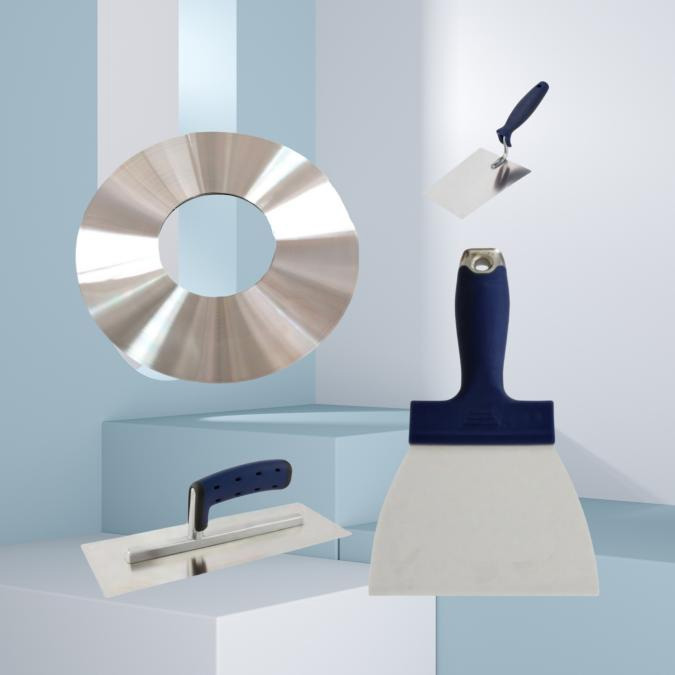The reason why stainless steel coils are suitable for making cement tools such as scrapers, trowels, and spatulas is that their comprehensive performance is highly matched with the usage scenarios of such tools. The specific reasons are as follows:

1.Strong corrosion resistance, adaptable to cement alkaline environment
After cement hydration, it is highly alkaline (pH 12-13), and ordinary steel is prone to rust and deterioration. Stainless steel coils contain elements such as chromium and nickel, and a dense passivation film is formed on the surface, which can isolate alkaline corrosion, prevent holes and strength loss in tools due to corrosion, and greatly extend the service life in cement environments.
2.Balance of strength and toughness to meet operational needs
The cold-rolled stainless steel coils have moderate hardness and strength, which can ensure that the tool does not deform or crack when scraping cement, while retaining a certain toughness. Facing the impact of hardened cement or repeated bending operations, it is not easy to break brittlely, and can withstand high-intensity operations such as scraping, shoveling, and pressing for a long time, taking into account rigidity and durability.
3.Excellent processing performance, suitable for mass production
The stainless steel coil has uniform thickness (0.3-3mm) and good ductility. It can be easily processed into the shape of scrapers and spatulas through cutting, stamping, bending and other processes. The coil shape is convenient for standardized mass production, and can be efficiently made into tools of different specifications. The processing process is simple, the cost is controllable, and it is suitable for industrial mass production needs.
4.Adaptation of surface characteristics to reduce cement adhesion
The surface of the stainless steel coil is flat and smooth, and it is less likely to adhere to cement after simple treatment. It can reduce cement adhesion during operation and reduce the frequency of cleaning; it can also be quickly rinsed after use to avoid cement drying and wear of tools, which not only improves operation efficiency but also maintains the stability of tool shape.